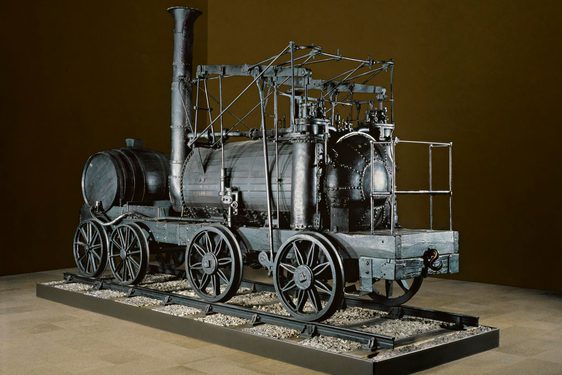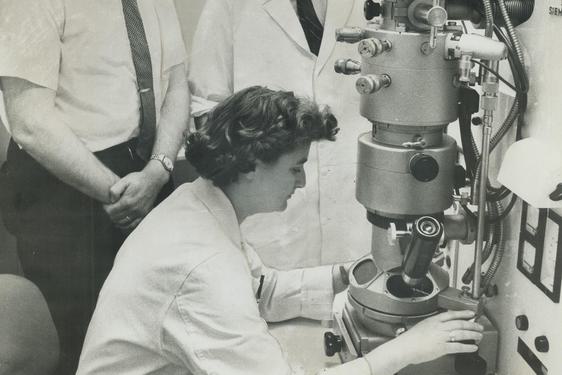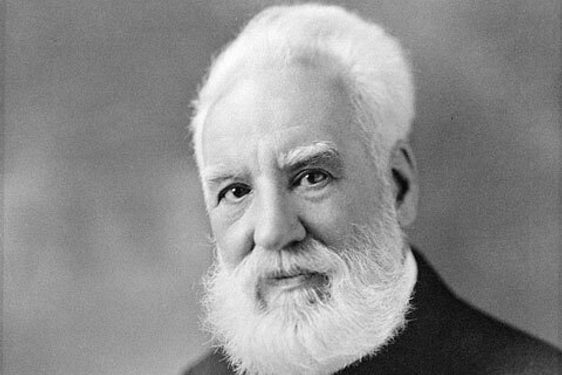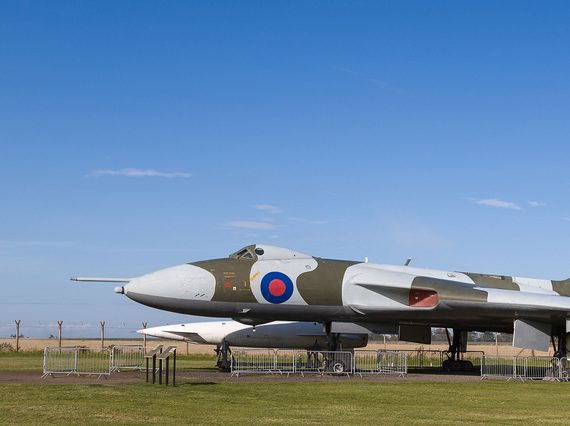
Avro Vulcan: A Cold War defence
News Story
The story behind V bombers and their role in Britain's nuclear defence strategy during the Cold War.
Britain's Cold War deterrent
In 1947, just after the end of the Second World War, the British Air Ministry issued a specification for a new jet bomber. It needed to carry a 10,000 lb (4,535 Kg) bomb to a target 1,500 nautical miles (1,726 miles or 2,778 km) from a base anywhere in the world. Designs were submitted by several British aircraft manufacturers.
Contracts were awarded to Handley Page for the Victor, Vickers-Armstrong for the Valiant, and Avro for the Vulcan. These three aircraft would collectively become known as the V bombers.
They were capable of carrying nuclear bombs and carried out the role of Britain’s nuclear deterrent from 1955. They were replaced by the submarine-launched Polaris missile in 1969 (except for the Valiant, which was retired from service in 1965).
The first V bomber in Royal Air Force (RAF) service was the Vickers Valiant, in 1955. It was followed by the Avro Vulcan in 1956 and finally the Handley Page Victor in 1958. The V force were planned to attack at very high altitude, around 50,000 feet (15,200 metres). At this height it was thought they would be immune to fighter attack. As a result, unlike Second World War bombers such as the Avro Lancaster, the V bombers carried no defensive armament.
The nuclear weapons carried by the V force were issued with colour code names. They were known as Blue Danube, Red Beard, Violet Club, and Yellow Sun.
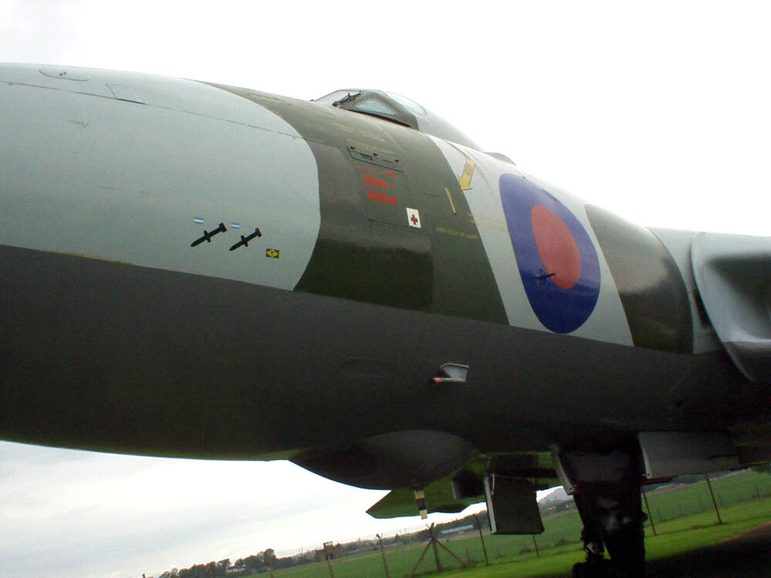
Mission markings of Avro Vulcan XM597 at National Museum of Flight, East Fortune Airfield. Museum reference T.1984.47.1
Low level V bomber flying
In May 1960, a high-altitude US Central Intelligence Agency (CIA) U-2 reconnaissance aircraft was shot down by a Soviet ground-to-air missile over Soviet airspace. It was clear that flying at high altitude no longer guaranteed immunity from attack. As a result, in 1963, the V bomber force was switched from high-altitude to a low-level attack profile.
In the event of war, the V bombers would fly towards their target at low-level, below radar cover. For these missions, the Vulcans and Victors were equipped to carry the Blue Steel stand-off missile which was fitted with the 1.1 megaton Red Snow warhead. Blue Steel had a limited range of 575 miles (926 km). Once within this range, the V bombers would have to climb to release the missile. At this point they would be vulnerable to anti-aircraft missile defences.
Although the V bombers never had to participate in a nuclear war, Vickers Valiants did drop nuclear bombs during tests in the 1950s. Valiants were retired from RAF service in 1965, the Vulcan in 1984 and the last Victor in 1993.
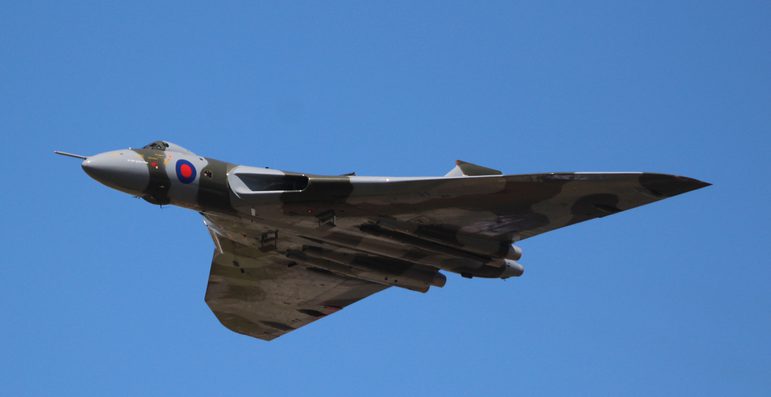
The Avro Vulcan XH558 in an air display over RAF Fairford in July 2015.
East Fortune's Vulcan XM597
The Vulcan at the National Museum of Flight entered service with the RAF in 1963. It is the world's first delta winged bomber.
In April 1982 Argentinian forces invaded the Falkland Islands. Following this, the RAF was tasked with launching attacks on the only runway in the islands, at Port Stanley, and its surrounding air defences. These raids were known as Operation Black Buck. They were flown by Vulcans, with a large number of Victor tankers providing air-to-air refuelling support, from the airfield on Ascension Island to the Falkland Islands and back again.
Black Buck 1 saw the runway bombed. This deterred the Argentinians from deploying fast jets to Port Stanley, from where they could have attacked by British naval Task Force.
Black Buck 5 was flown on 31 May 1982 by Vulcan XM597, the aircraft on display at the National Museum of Flight. It fired two Shrike anti-radar missiles, narrowly missing an Argentinean radar and causing minor damage to it.
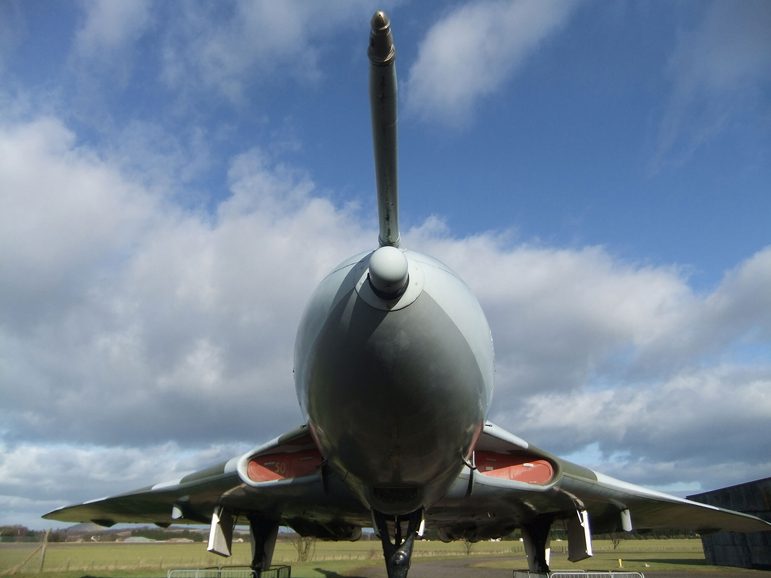
Nose cone close-up of the Avro Vulcan XM597. Museum reference T.1984.47.1.
Diversion to Brazil
Black Buck 6 on 3 June, again flown by XM597, was another attack on an Argentinean radar. A hit on the radar was achieved, destroying it and killing four men.
On the return flight to Ascension Island, the refuelling probe broke. Without enough fuel to reach Ascension, the pilot of XM597, Squadron Leader Neil McDougall, was forced to divert to Rio de Janiero. The two remaining Shrike missiles were fired off, but one of them was stuck on the pylon under the wing. Secret documents were jettisoned out of the crew hatch under the nose.
XM597 was interned until 11 June when it was released on the condition it played no further role in the conflict. The Shrike missile was confiscated by Brazilian authorities and was never returned.
XM597 remains one of only two Vulcans which dropped weapons in actual conflict. It made its last flight in 1984 when it flew to East Fortune to join the National Museum of Flight's collection.
